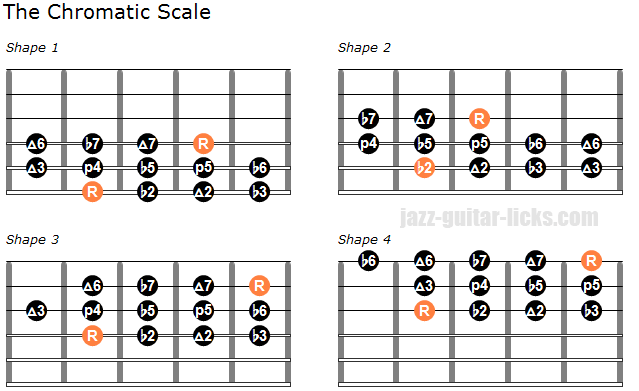
This exercise allows you to work on your fingering on your left hand and loosening up your fingers as you do. Take your time! It’s better to start off slow rather than make a lot of mistakes by trying to go too quickly. Furthermore, each note needs to be played cleanly and correctly. Each note should last the same amount of time, even when you change strings. Practise doing a back and forth motion with the plectrum as well. Make sure that you don’t start off too far up the fretboard. You’ll soon see that by doing this exercise every day, you’ll make steady progress. Start off slowly at first and then get faster as you progress. Do this until you’re up to the eleventh or twelfth frets. Shift your fingers to a new fret and do it again. Start on the low E string with your index finger on the 4th fret and then work your way up to the high E string. You can also do the same exercise on higher frets. B string: index finger on the 5th fret, middle finger on the 6th fret, ring finger on the 7th fret, pinky on the 8th fret.G string: index finger on the 5th fret, middle finger on the 6th fret, ring finger on the 7th fret, pinky on the 8th fret.D string: index finger on the 5th fret, middle finger on the 6th fret, ring finger on the 7th fret, pinky on the 8th fret.The goal is to repeat this exercise all over the neck. (Source: Pexels) The first thing you should do is play four consecutive notes on the same string. Play with a metronome and a pick when you practise your scales. Check for blues guitar lessons here on Superprof. It can be played on an acoustic guitar, electric guitar, or even an electro-acoustic guitar. The chromatic scale has 12 possible positions. A semitone interval between two different notes is a diatonic semitone (between G# and A, for example).ĭon't forget that guitarists should also learn about minor scales! How Do You Play the Chromatic Scale on the Guitar?.A semitone interval between two notes is a chromatic semitone (between D and D#, for example).The diatonic scale is a part of the chromatic scale. The latter is made of both chromatic and diatonic semitones all at once. The diatonic scale is also known as C major, which can also be played in other keys. While it’s useful for understanding harmonics, you may quickly forget its name. The diatonic scale includes the 7 natural notes in music: C D E F G A B C. (Source: b1-foto) Diatonic comes from the Greek and means “across the tonics”. Natural notes on a piano are usually white. The diatonic scale isn’t very often used on the guitar but it is useful for helping you understand music theory.

Find out more about major scales! What’s the Difference Between a Chromatic Scale and a Diatonic Scale? However, the two are actually exactly the same note. For example, instead of a C#, you could have a Db. There are 12 different notes between each tonic. In reality.

There’s no need to alter any of the notes in this case. In fact, there is no such thing as E sharp or B sharp. Remember that between E and F and B and C there is no semitone. A chromatic scale is basically every note until you reach the next octave. The chromatic scale for C is C, C#, D, D#, E, F, F#, G, G#, A, A#, B, C. A chromatic scale is, therefore, atonal because it doesn’t matter which key it is in. (Source: jameslee) It consists of every note, each separated by a semitone. The notes are all separated by the same interval and it’s impossible to work out the scale’s key. Scales are great for warming up your fingers. While it’s not very melodic, it’s a good one to learn about for when you're working on your technique and doing various exercises. A chromatic scale is a useful part of learning music theory.


 0 kommentar(er)
0 kommentar(er)
